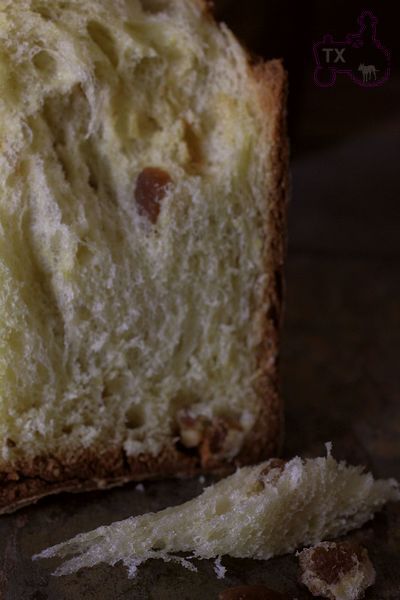Sending this to Yeastspotting.
Click here for my blog index.
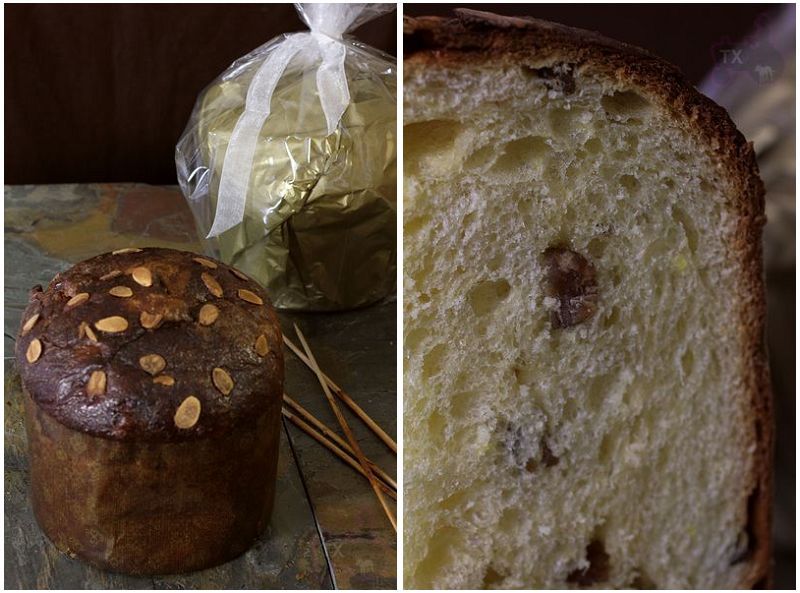
It's that time of the year again -- when I sacrafice sleep in honor of holiday spirit. Starting early this year since I am moving soon, and sourdough panettone makes a great goodbye gift. This recipe is from here: 53% butter, 36% sugar, and 50% egg yolks (that's 16 yolks for 2 loaves my friends, as I was seperating them, I was praying the breads would work out, I really would like NOT waste a whole case of eggs for nothing!)! It's rich, it's light as air, it's melt in your mouth, I am pretty sure my friends will remember me for a looooong time! I follow the recipe closely with the following notes:
- Yes, the link is in Italian, this is where we put Google Translate in good use.
- Instead of sultanas and candied fruits, I got inspired and add candied chestnuts. Recipe can be found here. Yes, it takes 4+ days to make, but hey, with this sourdough panettone thing, one should just ignore time spent, money spent, or fat/cholesterol content. :P I didn't make quite enough, so my add-in ingredients was 87.5% of what the formula specified for both sultanas and candied fruits, making the final loaves slightly lighter (but definitely not smaller, see below).
- I made 2/5 of the formla, which means I got 2 big loaves. If I had divided the dough evenly, each should be 1040g, perfect for the paper case. However, one loaf was a gift, the other was for ourselves, so I put 1100g in the gift case, only 980g in the other. From last years experience, I thought 1100g would fit, but OMG, this formula is much richer, which means the dough rose much higher. As you can see below, the 980g looks perfect, the 1100g one was threatening to spill over! Oh well, my friend had no objection with some extra yummy bread.
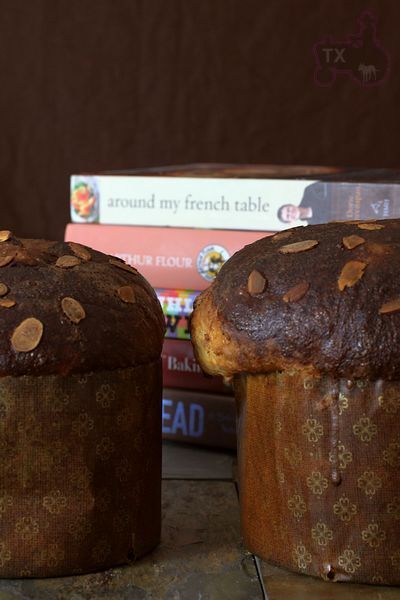
-Key #1 for a successful sourdough panettone, especially such a rich one, is an active Italian mother starter. I first kept my 100% liquid starter at room temp for 2 days (feeding everything 12 hours), then converted to 50% firm starter (20g 100% starter +20g Bread Flour+5g water), then keep it at 85F and feed it every 4 hours with following ratio: (starter: flour: water = 1:1:0.5). Did this for 48 hours, the starter more than tripled between each feeding.
-Key #2 for a successful sourdough panettone is a thorogh kneading. For the first dough, butter must be added little by little after the dough as come together, then I kneaded until the dough came together again and cleared most of the mixing bowl (no need for windowpane). Be careful not to overknead, with so much yolks and butter, it's easy to overknead. However, be sure not to underknead, otherwise, the 2nd dough would be much harder to knead. The following is first dough after kneading:

For 2nd dough, butter must be added little by little AFTER the dough has come together and clear the bowl. After butter is added, the dough must be kneaded until you can get a thin but strong windowpane. The dough literally felt like liquid silk, draping down from my hands.

-Unlike last year, the dough rose right on schedule this time, indicating an active starter and good kneading. After 5 hours at 30C, the dough came to the rim of the case. The chocolate glaze recipe I used was from AB&P.

- I hung the loaves upside down between stacks of books for 5 hours after baking.
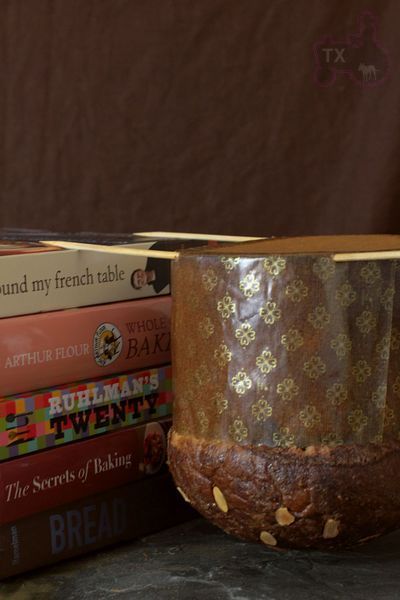
- For my last years panettone post please click here, it also includes info on the paper case.
Definitely richer and lighter than last year's version
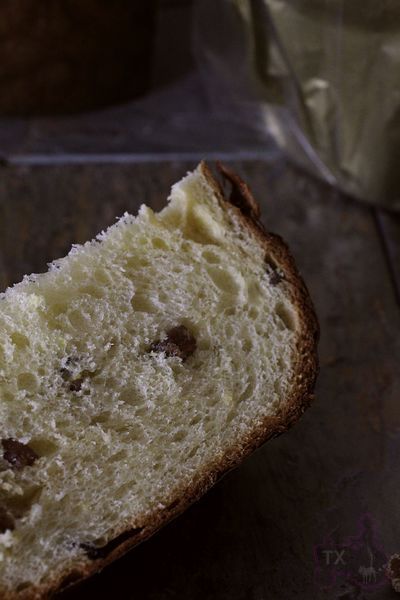
Shredding...the texture is literally like air, the flavor on the other hand, hits like a rock! If I can get my new kitchen in order before Christmas, I am sure I will make more of these.
